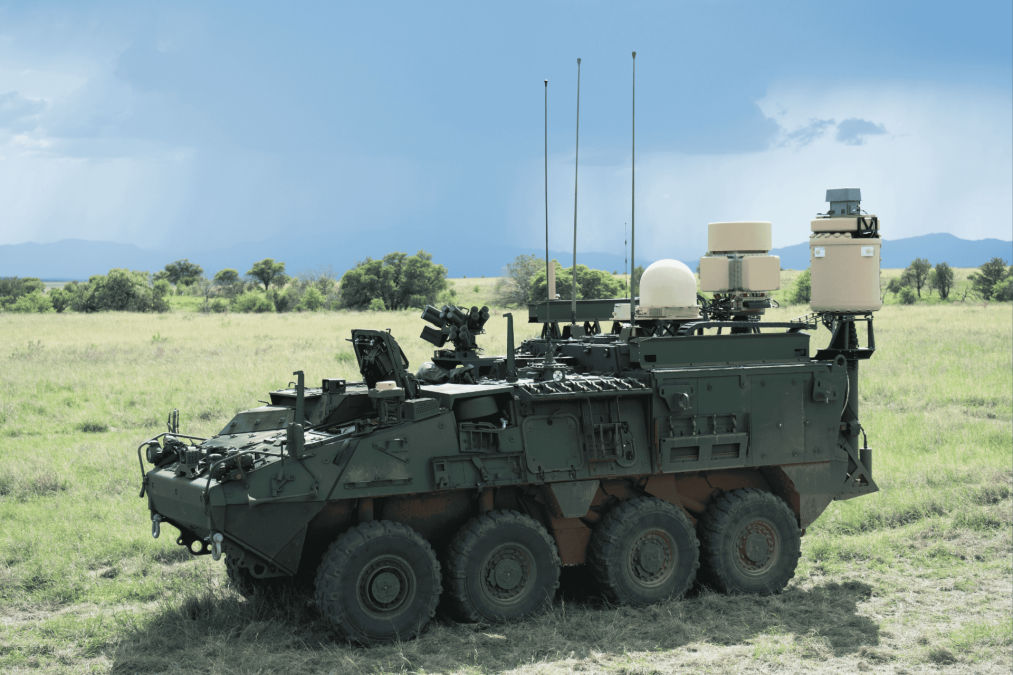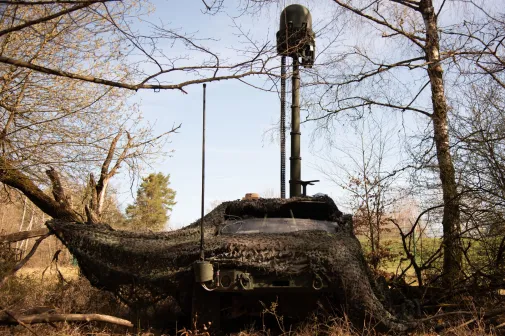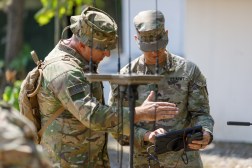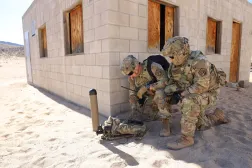Army pursuing new electronic warfare architecture

After deciding to split up its integrated signals intelligence and electronic warfare platform, the Army is pursuing a new architecture for its EW suite.
Following operational demonstrations, the service determined that the concept for the Terrestrial Layer System-Brigade Combat Team was not going to work the way it was intended or gain the efficiencies desired.
TLS-BCT was designed as the first integrated signals intelligence, cyber and electronic warfare platform, devised roughly six years ago. It has been described as a key enabler of Army priorities — considering the service has been without a program-of-record jammer for decades — that will support multi-domain operations. As initially conceived, it was to be mounted on Strykers and then Army Multi-Purpose Vehicle variant prototypes.
Outside experts had always voiced concern with such a setup given the highly classified nature and authorities that come with signals intelligence and the issues associated with putting that on the same platform as electronic warfare tools.
Now, the Army has decided to split the system up — along with the TLS-Echelons Above Brigade, designed primarily for divisions, corps and Multi-Domain Task Forces to sense across greater ranges than its brigade counterpart — into two separate systems.
“TLS-BCT, specifically, this program was birthed with the concept that you could have one system where you had EW and SIGINT soldiers on board the same platform, operating at the same time, supporting different battlefield operating systems,” Kenneth Strayer, project manager for electronic warfare and cyber at program executive office for intelligence, electronic warfare and sensors, said in an interview.
“Although SIGINT and EW are very similar — they use very similar hardware, software — they have different mission threads and they often need to be at different places on the battlefield. They have different requirements in terms of timeliness and data sharing,” he added. “The big ‘ah-ha’ as we went into the operational demonstration [was] that wasn’t going to work the way that we envisioned it and we weren’t going to get the efficiencies we wanted.”
This has now forced the Army to relook and reset its electronic warfare architecture as to not be tied to the signals intelligence production chain that requires a different hardware and software approach, Strayer said.
One of the key lessons being learned in conflicts like Ukraine is the need for speed. Classification is often a barrier to moving fast, forcing the Army in other portfolios to loosen the reins with concepts such as secure but unclassified-encrypted communications, which reduces overall network complexity and has had huge benefits in terms of interfacing with partner nations and eschewing the need for liaisons. That increases the pace of operations.
Moreover, as the Army shifts to the division as the unit of action instead of the brigade of the last 20 years during the global war on terror, higher classified networks such as signals intelligence will be pushed to higher echelons while smaller units such as brigade and below will need to be unburdened and empowered to share with coalition forces on faster timelines, such as near real-time.
“This really needs to be pushed down to the unclassified level, secret [and] below … so we can share with coalition partners and rapidly feed the fires targeting cycle without having to go up through national SIGINT chains,” Strayer said.
As a result, the program office is gearing up to release a request for information to industry to inquire on the availability of commercially or government-owned, preferably off-the-shelf electronic warfare hardware and software ecosystems or architectures that the Army could leverage to tailor for the unique requirements of each echelon to converge on a common hardware/software architecture that’s scalable across echelons.
“We don’t want to go trying to reinvent something. We think the commercial marketplace is really caught up based on the work that’s going on with other services and throughout industry. We’re excited to hear what industry has to offer in the coming months,” Strayer said. “That’s going to drive our acquisition strategy for EW moving forward.”
The new architecture it’s pursuing is supposed to allow for the rapid collection, dissemination and reprogramming of signals in the field at the speed of war. The service wants the ability to have a compute architecture of standard CPUs and GPUs that can be purchased to facilitate the ability to pull out classification and identification of signals in the environment, and plug in third-party capabilities such as artificial intelligence and machine learning to keep pace with threats by being able to identify and classify signals.
All the while, the Army wants to be able to purchase commercial sensors given the rich marketplace that exists in the private sector now, rather than spending money to develop its own, unique, fit-for-purpose sensors.
As the service is conducting market research on this evolving electronic warfare architecture, it’s still pursing the signals intelligence system development, which is more mature than the electronic warfare portions.
Strayer said the Army was “pretty close” on the Stryker-based signals intelligence system configuration, formerly TLS-BCT, at the operational demonstration last year. Officials will look to continue refining that effort with a customer test this year and a follow-on demonstration next year before getting it into the field.
On TLS-EAB, the Army started bifurcating the electronic warfare and signals intelligence capabilities based on lessons learned from Europe, despite initially envisioning it as one system that does it all. That program initiated after the brigade version.
As a result, that effort is also going down two pathways: signals intelligence and electronic warfare.
Given the new approach with the electronic warfare architecture, the Army has asked the vendor to prioritize the signals intelligence portion of the system. The vendor is working on a hands-on physical integration of the desired signals intelligence architecture that could be a 20-foot container for the first prototype, allowing it to be mounted in different ways.
That prototype is scheduled to be delivered to the Army in early calendar 2025 but could slip to second quarter.
On the electronic warfare aspect, officials are using this system as the main component for defining and demonstrating the initial EW architecture, given the BCT portion of the program went so far with a demonstration and design on an integrated platform.
The EAB program will be publishing the requests for information concerning the architecture, that will eventually deliver it back to the BCT version for integration.
Once developed, the architecture will have the ability to tailor for the need at each echelon.
Next year will be a focal point for the effort, with demonstrations planned and the goal of selecting a common architecture by the end of 2025. It will then be instantiated in some physical prototypes in 2026 for both the EAB and hopefully BCT as well, according to Army plans.






